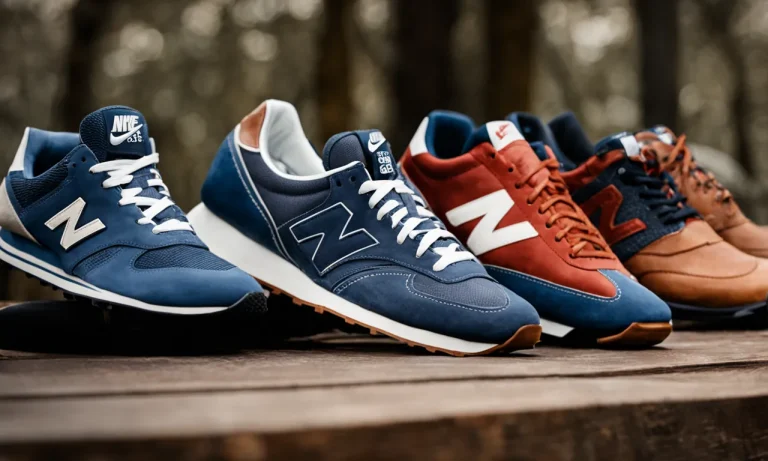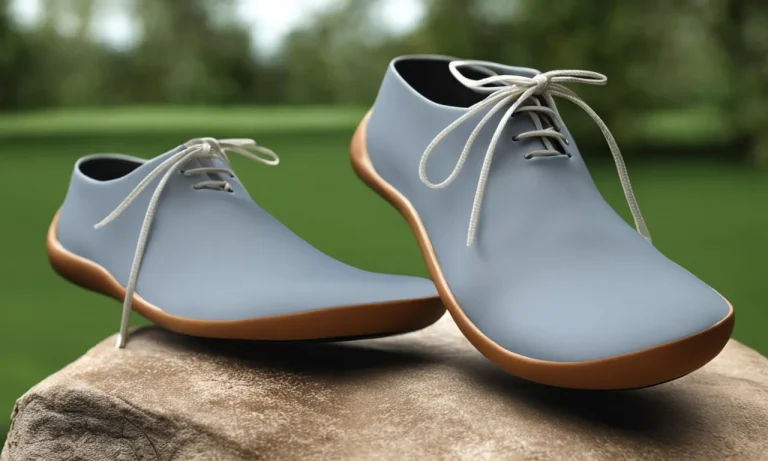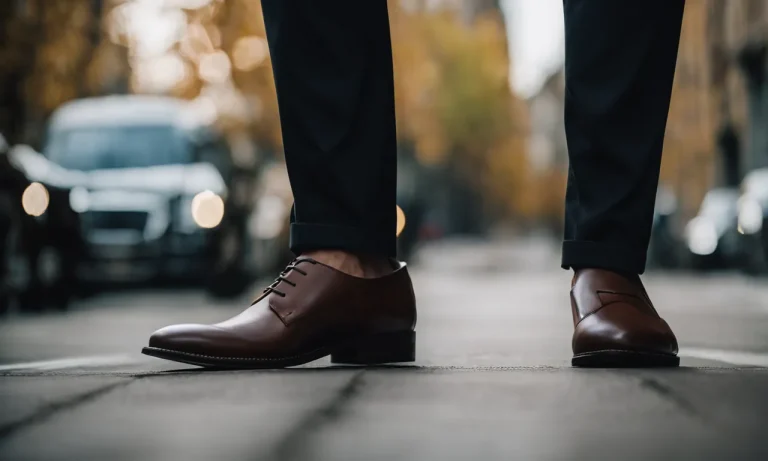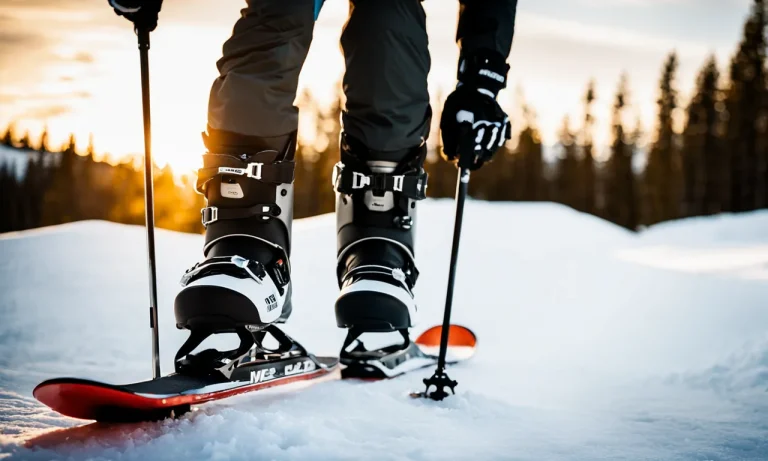Whether you’re a seasoned skier or just starting out on the slopes, having a proper ski boot fit is essential for performance, comfort and injury prevention. In this comprehensive guide, we’ll cover everything you need to know about how ski boots should fit to help you dial in the perfect boot for your needs.
If you’re short on time, here’s a quick answer: Ski boots should fit snugly with no pressure points or pinching, allow full ankle flexion and keep your heel locked down in the heel pocket with minimal lift. Focus on snugness over tightness for the best fit.
Understand Ski Boot Anatomy
Before diving into how ski boots should fit, it’s important to understand the anatomy of a ski boot. A ski boot consists of several components that work together to provide support, control, and comfort while skiing. Here are the key components:
Shell
The shell is the outer part of the ski boot and is typically made of a hard plastic material. It provides the structure and stability of the boot. The shell is designed to be rigid, which helps transfer energy from your legs to the skis.
Liner
The liner is the inner part of the ski boot that comes into direct contact with your foot. It is usually made of foam or other soft materials to provide cushioning and insulation. The liner helps to keep your foot snug and secure within the boot.
Footbed
The footbed, also known as the insole, is the part of the ski boot that supports the arch of your foot. It is designed to provide stability and prevent excessive movement within the boot. A properly fitted footbed can help alleviate foot fatigue and improve overall comfort.
Cuff
The cuff is the part of the ski boot that wraps around your lower leg. It is typically made of a softer material than the shell to allow for flexibility and movement. The cuff provides support and helps to control the movement of your leg while skiing.
Tongue
The tongue is the part of the ski boot that covers the front of your shin. It helps to distribute pressure evenly and provides additional padding for comfort. The tongue also plays a role in controlling the flex of the boot.
Buckle System
The buckle system is used to secure the ski boot around your foot and leg. It typically consists of multiple buckles or straps that can be adjusted to achieve a snug fit. The buckle system allows for customization and ensures that the boot stays securely in place while skiing.
Understanding the different components of a ski boot will help you make informed decisions when it comes to finding the right fit. Keep in mind that proper fit is crucial for performance, comfort, and safety on the slopes.
Key Areas for Ski Boot Fit
When it comes to skiing, having properly fitting ski boots is essential for comfort, performance, and safety on the slopes. There are several key areas to consider when fitting ski boots, each playing a crucial role in ensuring a comfortable and secure fit.
Toe Box
The toe box is one of the most important areas to consider when fitting ski boots. It should provide enough room for your toes to wiggle comfortably, but not so much that your foot slides around inside the boot. A snug fit is necessary to maintain control and responsiveness while skiing.
Heel Pocket
The heel pocket is another critical area to pay attention to when fitting ski boots. Your heel should be securely held in place without any slippage. A properly fitting heel pocket ensures that your foot stays in position and allows for efficient power transfer from your leg to the ski.
Ankle Flexion
Proper ankle flexion is essential for skiing technique and overall comfort. The boot should allow for a natural range of motion in your ankle, enabling you to flex and extend your lower leg without restriction. Ankle support is also important to prevent injuries and maintain stability during turns.
Forefoot Width
The width of the forefoot plays a significant role in ski boot fit. It should provide enough space for your foot to spread out comfortably, but not so much that it feels loose or sloppy. The right forefoot width ensures a snug fit and maximizes power transmission from your foot to the ski.
Arch Height
Consider your arch height when fitting ski boots. A boot that matches your arch shape provides better support and reduces the risk of discomfort or pain. If you have high arches, you may need additional support inserts to maintain proper alignment and prevent excessive pressure on the arches.
Calf Circumference
The calf circumference is an often overlooked aspect of ski boot fit. The boot should snugly hug your calf without excessive pressure or discomfort. If you have larger or smaller calf muscles, consider boots with adjustable features or consult with a professional boot fitter to find the right fit.
Shin Clearance
Shin clearance refers to the amount of space between the front of your shin and the boot’s tongue. It should be sufficient to prevent discomfort or pressure points, particularly during flexion. A proper shin clearance ensures a comfortable fit and allows for smooth and efficient skiing movements.
Remember, finding the perfect fit may require some trial and error, and it’s always a good idea to consult with a professional boot fitter. They have the expertise and knowledge to assess your specific needs and recommend the best ski boots for you.
So, when you hit the slopes, make sure your ski boots fit like a glove!
Fitting Process and Tips
Shop Late Afternoon
When it comes to buying ski boots, timing is everything. One key tip is to shop for ski boots in the late afternoon. Why? Because our feet tend to swell throughout the day, and by the late afternoon, they are at their largest size.
By trying on ski boots at this time, you can ensure a more accurate fit that will accommodate your feet comfortably even during long days on the slopes.
Wear Proper Socks
The right pair of socks can make a significant difference in how your ski boots fit. It’s essential to wear proper ski socks when trying on boots. Ski socks are specifically designed to provide cushioning, support, and moisture-wicking properties.
Avoid cotton socks as they tend to absorb moisture and can make your feet cold and uncomfortable. Opt for moisture-wicking materials like merino wool or synthetic blends for the best comfort and performance.
Loosen Buckles Fully
Before trying on ski boots, make sure to loosen all the buckles fully. By doing this, you allow your foot to slide into the boot more easily, ensuring a proper fit. Tight buckles can distort the fit and prevent you from getting an accurate feel for the boot’s comfort and performance.
Once your foot is inside the boot, you can then adjust the buckles to achieve the desired snugness.
Focus on Snug Over Tight
When fitting ski boots, it’s important to focus on achieving a snug fit rather than a tight fit. A snug fit will provide the necessary support and control while skiing, whereas a tight fit can restrict blood circulation and cause discomfort.
Your boots should feel secure around your foot and ankle, with minimal heel lift and toe wiggle room. Remember, ski boots will mold and pack out slightly over time, so don’t be tempted to buy a size too big.
Test Flexion and Forward Lean
Once you have the ski boots on, test their flexion and forward lean. Flexion refers to how easily your ankle can bend forward, while forward lean refers to the boot’s angle when you’re in a skiing stance.
You should be able to flex your ankle comfortably, and the forward lean should feel natural and supportive. Testing these movements will give you a better understanding of how the boots will perform on the slopes.
Heat Molding Liners
Many ski boots come with heat-moldable liners, which can provide a more customized fit. Heat molding involves heating the liners to soften them, allowing them to conform to the shape of your foot. This process can offer improved comfort and performance by reducing pressure points and enhancing the overall fit.
If your ski boots have heat-moldable liners, it’s worth taking advantage of this feature for a more personalized fit.
Consider Footbeds or Orthotics
If you have specific foot issues or require additional support, considering using footbeds or orthotics in your ski boots. These inserts can help correct alignment, provide extra cushioning, and enhance overall comfort.
Custom footbeds or orthotics can be particularly beneficial for individuals with high arches, flat feet, or other foot conditions. Consult with a bootfitter or podiatrist to determine if footbeds or orthotics are right for you.
Work with a Bootfitter
When it comes to finding the perfect fit for your ski boots, working with a professional bootfitter is highly recommended. Bootfitters are trained experts who can assess your foot shape, size, and alignment to recommend the best ski boot options for you.
They can also make necessary adjustments to the boots, such as stretching certain areas or adding padding, to ensure a precise fit. Investing in a proper bootfitting session can greatly enhance your skiing experience and prevent discomfort or injuries.
Breaking In New Ski Boots
When you first purchase a new pair of ski boots, it’s important to break them in properly to ensure a comfortable and enjoyable skiing experience. Here are some tips on how to break in your new ski boots:
Wear Around the House
One of the easiest ways to break in your ski boots is to wear them around the house for short periods of time. This will help your feet get used to the shape and feel of the boots. Take note of any areas that feel tight or uncomfortable, as these might need some additional attention.
Flex Boots by Hand
Another way to break in your ski boots is to flex them by hand. Hold the boot in one hand and use your other hand to flex the boot forward and backward. This will help to loosen up the material and make the boots more flexible.
Consider Shell Stretching
If your ski boots are still feeling too tight after wearing them around the house and flexing them by hand, you may want to consider shell stretching. This process involves heating the plastic shell of the boot and stretching it to create more space for your feet.
It’s important to note that this should be done by a professional boot fitter to avoid damaging the boots.
Use a Boot Stretcher
If you’re experiencing discomfort in specific areas of your ski boots, such as pressure points on your toes or heels, a boot stretcher can be a useful tool. A boot stretcher is designed to stretch out specific areas of the boot to provide more room and alleviate pressure.
Again, it’s recommended to have this done by a professional.
Heat Mold Again if Needed
In some cases, you may need to have your ski boots heat molded more than once. This is especially true if you’re still experiencing discomfort or if the boots haven’t fully formed to the shape of your feet. A second heat molding session can help to further customize the fit of your boots.
Retest Fit and Make Adjustments
After breaking in your ski boots and making any necessary adjustments, it’s important to retest the fit. Put your boots on and walk around to ensure they feel comfortable and secure. If you notice any issues, such as areas that are still too tight or loose, make note of them and consult with a professional boot fitter for further adjustments.
Remember, properly breaking in your ski boots is essential for a successful day on the slopes. It’s worth taking the time and effort to ensure a comfortable fit so you can fully enjoy your skiing experience.
When to Replace Ski Boots
Knowing when to replace your ski boots is essential for maintaining comfort, performance, and safety on the slopes. Here are some key factors to consider:
Packing Out Over Time
One of the main reasons to replace ski boots is when they start to pack out over time. This is a natural process where the foam liner inside the boot compresses and loses its original shape. As a result, the boots may feel loose and provide less support.
If you notice significant heel lift or your feet sliding inside the boots, it’s a good indication that they have packed out and it’s time for a new pair.
Change in Fit Needs
Your foot shape and size can change over time, which may require a different fit in ski boots. For example, weight gain or loss, pregnancy, or medical conditions can all affect the size and shape of your feet.
If you find that your current boots no longer provide a snug and secure fit, it’s time to consider replacing them.
Excess Wear and Damage
Regular wear and tear can take a toll on your ski boots. Cracked shells, broken buckles, or worn-out soles can compromise the performance and safety of your boots. If you notice any significant damage or signs of wear that cannot be repaired, it’s best to invest in a new pair.
New Advancements in Models
Ski boot technology is constantly evolving, with new advancements and features being introduced each year. If your current boots are several seasons old, you may be missing out on the latest improvements in fit, comfort, and performance.
Upgrading to a newer model can enhance your skiing experience and give you access to the latest innovations.
100-125 Days of Use
On average, ski boots have a lifespan of around 100-125 days of use. This can vary depending on factors such as the intensity of your skiing, the quality of the boots, and how well you take care of them.
If you’re a frequent skier and have been using the same pair for multiple seasons, it’s worth considering replacing them to ensure optimal performance and comfort.
Remember, ski boots are a crucial piece of equipment that directly affects your skiing experience. It’s important to regularly assess their condition and replace them when necessary to ensure you have the best fit and performance on the slopes.
Conclusion
Finding the optimal ski boot fit is a complex endeavor, but taking the time to get it right will pay dividends out on the mountain. Focus on a snug fit with no pressure points, adequate ankle flexion and a locked down heel.
Work with an experienced bootfitter, properly break them in at home and get the right replacement schedule. With well-fitted boots tailored to your feet, you’ll be carving up the slopes in comfort and control in no time.






